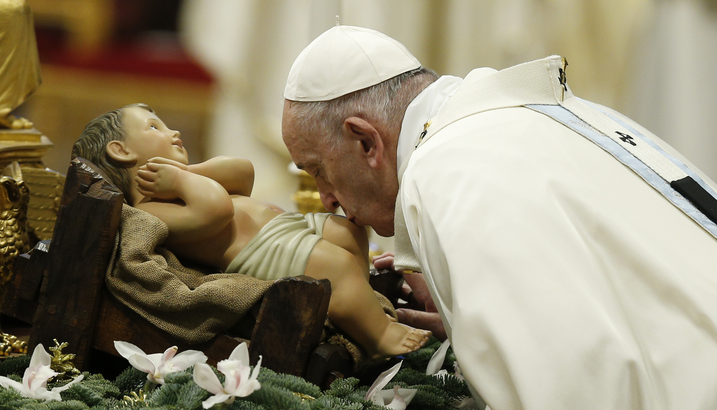There’s fatigue heading into 2020 in the US, but also cause for a bit of optimism, writes Christopher White
One year ago, the US bishops gathered at Chicago’s Mundelein Seminary for a historic retreat initiated by Pope Francis in response to the latest round of the clergy abuse scandals. Some months earlier, the leadership of the US Church had arrived in Rome to meet with the Pope with a plan already schemed up: he would authorise a Vatican-led investigation into Theodore McCarrick, the former archbishop of Washington who would become one of the most influential Churchmen in the last half century, only to be revealed as a serial abuser of minors and seminarians.
How had such a man ascended the ranks of power without anyone uncovering these misdeeds, the US bishops wanted to know — or perhaps did someone know, as rumors had swirled for years, and turned a blind eye? A Vatican investigation, they believed, would put these matters to rest and help the US bishops turn a corner on the ugliest scandal it has had to face in its history.
The Pope had a different strategy.
The abuse crisis would not be solved, he wrote to them in an eight-page letter, by “simply creating new committees or improving flow charts”. Instead, the Pope would go on to challenge them to “pastoral conversion” to change a culture, which, he posited, allowed abuse to fester.
Retreat
Through eight days of communal prayer, retreats led by Fr Raniero Cantalamessa OFM Cap., the preacher to the papal household, adoration, and the breaking of bread together, the Pope believed that a divided episcopacy – one that had long favoured technocratic solutions – could perhaps begin to reckon the with the spiritual crisis at the heart of the abuse scandals. Only then, the Pope believed, could the US Catholic leadership confront the culture of clericalism and elitism that had plagued it for too long.
The result were mixed. While I’ve heard nothing but high praise from a range of bishops across the ideological spectrum that participated in retreat, once they returned home, the overwhelming reality of a flock still lost, wandering, and reeling left the wisdom gained from retreat to seem as if it were a distant reality.
After nearly seven years in office, Francis has yet to make the sort of bold ‘legacy’ appointments in the US that some have predicted”
Over the course of 2019, the US Church continued to feel the aftershocks of the scandals, both of sexual misconduct but also that of financial impropriety, when it was revealed that the longtime leader of Catholics in West Virginia – one of the poorest parts of the country – spent millions renovating his home, luxury travel, and handsome gifts to other prelates.
There’s fatigue on all fronts heading into 2020, but there’s also cause for a bit of optimism, too. Catholics, after all, are meant to be people of hope.
Changes
2019 brought some notable changes among the top brass, with the appointment of Archbishop Wilton Gregory to lead the nation’s capital.
His appointment marks the first time an African American has been tapped to lead one of the historic centres of African American culture in the US. In November, Archbishop Jose Gomez – a Mexican-born immigrant who leads the nation’s most diverse Catholic diocese of Los Angeles – was elected as the new head of the US bishops in a landslide victory. Both appointments reflect the rapidly changing face of the Catholic Church and is welcome news for Catholics who have long lamented that its leadership rarely reflects the reality found in its pews.
Over the course of the year ahead, Pope Francis will have the opportunity to continue to put his stamp on the Church in the US with key episcopal appointments to be made in Philadelphia, St Louis, and Atlanta, along with nearly ten other smaller dioceses across the country.
After nearly seven years in office, Francis has yet to make the sort of bold ‘legacy’ appointments in the US that some have predicted – and in some quarters feared – but as one archbishop recently told me, “expect some surprises this year. The Pope is unafraid.”
The turn of the New Year has been bookended with US bishops having their first ad limina visits to Rome under the Francis Papacy, beginning in November and ending in February.
Transparency
By many accounts, these visits have been a big hit among the US prelates, many of whom have yet to have the occasion to interact with the Pope on an intimate level and have been genuinely moved by his candor and transparency in these freewheeling, personal conversations.
Many have also said that after a year of bad headlines and strife, they’ve found the time in Rome to be of great personal encouragement, too. Now, as they return back to their dioceses and begin a New Year, it’s time to see if they can translate experience to the faithful back at home.
Christopher White is the national correspondent for Crux and The Tablet newspaper of the diocese of Brooklyn. Follow him on Twitter @CWWhite212.


 Pope Francis kisses a figurine of the baby Jesus at the start of Mass on the feast of Mary, Mother of God, in St. Peter's Basilica at the Vatican Jan. 1, 2020. CNS photo/Paul Harin
Pope Francis kisses a figurine of the baby Jesus at the start of Mass on the feast of Mary, Mother of God, in St. Peter's Basilica at the Vatican Jan. 1, 2020. CNS photo/Paul Harin 